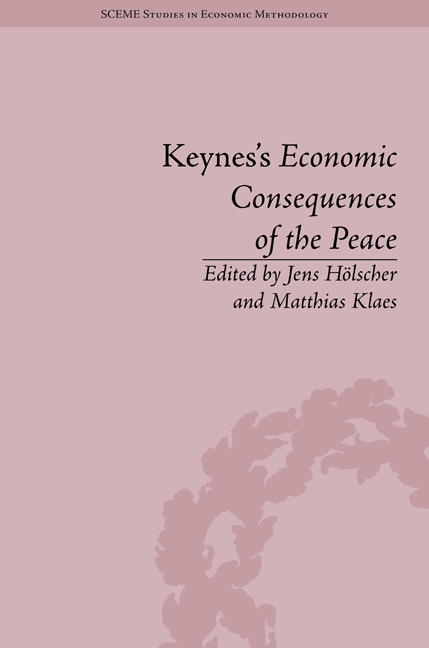Book contents
- Frontmatter
- CONTENTS
- List of Figures
- List of Contributors
- Introduction: Standing the Test of Time: Maynard Keynesas's Economic Consequences of the Peace, a Century On
- Part I The Consequences in their Time
- 1 Reparations, Orthodoxy and Fascism
- 2 What Literary Criticism Tells us about Keynes's Economic Consequences of the Peace
- 3 The Reception and Impact of Keynes's Economic Consequences of the Peace in Turkey
- 4 The Essays in Persuasion of John Maynard Keynes and their Relevance for the Economic Problems of Today
- Part II The Consequences Today
- Part III Keynes: A Play
- Notes
- Index
2 - What Literary Criticism Tells us about Keynes's Economic Consequences of the Peace
from Part I - The Consequences in their Time
- Frontmatter
- CONTENTS
- List of Figures
- List of Contributors
- Introduction: Standing the Test of Time: Maynard Keynesas's Economic Consequences of the Peace, a Century On
- Part I The Consequences in their Time
- 1 Reparations, Orthodoxy and Fascism
- 2 What Literary Criticism Tells us about Keynes's Economic Consequences of the Peace
- 3 The Reception and Impact of Keynes's Economic Consequences of the Peace in Turkey
- 4 The Essays in Persuasion of John Maynard Keynes and their Relevance for the Economic Problems of Today
- Part II The Consequences Today
- Part III Keynes: A Play
- Notes
- Index
Summary
The Economic Consequences of the Peace is a particularly good example of the influence Keynes' classical education, with its emphasis on the ‘rules of rhetoric’, had on his explicit attempts at persuasion. In the book there are numerous examples of elevated language, metaphors, allusions and literary devices, which characterize his written style. In addition, the inclusion of statistics was a means by which Keynes could persuade his readers of the ‘factual, objective and neutral’ economic arguments he was making. His statistics also provide a balance to his more elaborate prose and help support his claim that Economic Consequences was a serious work of economics rather than the mere political polemic many of his critics argue it is.
Keynes captures the readers imagination by his use of a wide range of literary sources, metaphors, analogies and allusions to describe and alert his readers to the gravity of the situation facing Europe. For example, to describe the weak and inept leadership of President Wilson he compares him to a ‘blind Don Quixote’ and Lloyd George the ‘Anti-Christ’ (anti-Christian) whose scheming and manipulation rendered Wilson a hapless and ineffective leader. Keynes highlights disappointment in Wilson by comparing him to Napoleon, not in the victorious sense but in the sense of failed promise and impotence. Tolstoy, Hardy and Shaw all wrote of Napoleon in this way.
- Type
- Chapter
- Information
- Keynes's Economic Consequences of the PeaceA Reappraisal, pp. 35 - 62Publisher: Pickering & ChattoFirst published in: 2014

